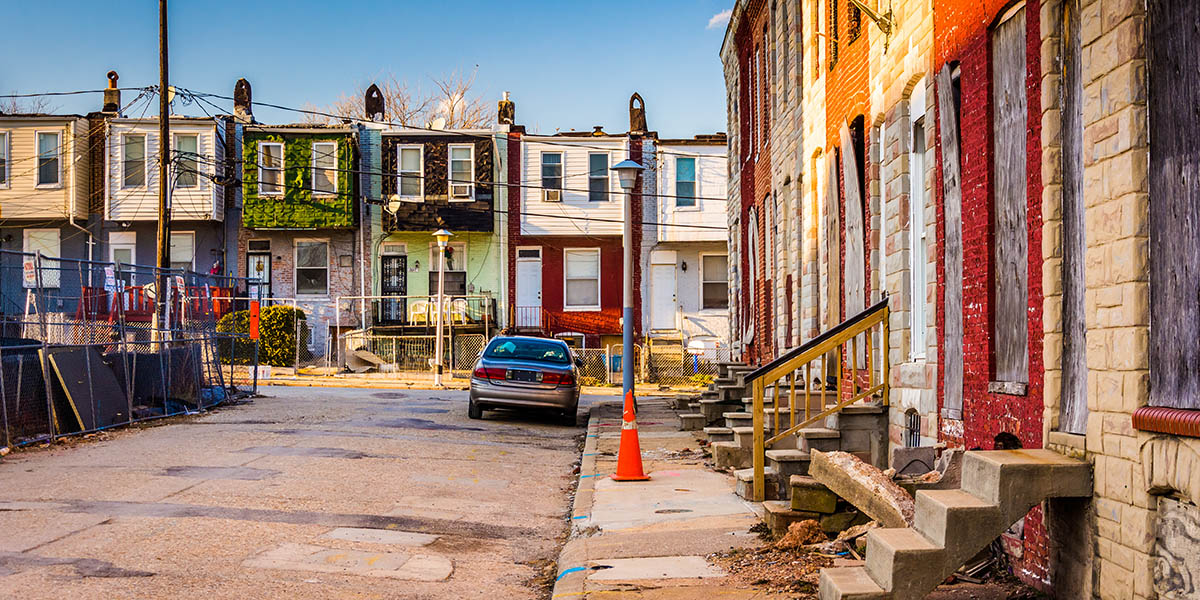Editor's note: The following is a review of the book, The Color of Law by Richard Rothstein
Federal, state, and local policies condemned blacks to separate, unequal neighborhoods. How to move forward now.
In the conventional view, if government ever failed in the battle against racial segregation, the failure has mainly been through sins of omission rather than commission. In this thorough and unsettling narrative, subtitled A Forgotten History of How Our Government Segregated America, Richard Rothstein, an associate at the Economic Policy Institute, informs us that the conventional view is sadly mistaken. All levels of government—federal, state, and local—played a decisive role in fostering racial segregation.
In 1933, as the New Deal got under way, Secretary of the Interior Harold Ickes launched the nation’s first federal public housing program. His Public Works Administration set out to provide apartments for both blacks and whites, but notably, not together. Some projects were to be set aside for blacks and others for whites, except for a relative few that included both, though in separate buildings.
The Ickes rule set the stage for a long series of government-led rules that reinforced and, in many cases, created such segregation, not just in the Jim Crow South but throughout the country. The 1949 Housing Act permitted the construction of racially segregated public housing. As a result, in Boston, the Mission Hill project was 98% white, while the nearby Mission Hill Extension was similarly black.
Nor was public housing the only program operated in an explicitly race-conscious manner. The Federal Housing Administration, which began in 1934 to insure long-term mortgages with 20% down payments, took race explicitly into account. Local zoning rules, too, became instruments of residential racial division. Baltimore adopted a zoning code, copied widely, that prohibited African-Americans from buying homes on blocks where whites were a majority, and vice versa.
Yet despite Rothstein’s admirable work in exposing government-led racial segregation, he remains confident that government today is the appropriate instrument to effect housing integration. In his view, government must act because its decisions led to such neighborhoods in the first place. He dismisses the idea that his own narrative strongly suggests the private housing market, guided by rigorously enforced antidiscrimination laws, offers African-American buyers the surest route to wealth accumulation and upward mobility.
Rothstein himself recounts how public housing at times replaced poor, but racially integrated, neighborhoods spawned in the private market. In other words, private housing markets were creating integration before government planners got in the way. Poor black neighborhoods characterized by significant degrees of property ownership were cleared for public housing, in which private ownership was by definition absent.
Privately owned homes permit wealth accumulation. Public housing doesn’t. The author seems to believe housing integration is the only value, superseding all others. For example, he endorses the Barack Obama–era policy of “affirmatively furthering fair housing” that would pressure affluent suburbs to permit the construction of low-income rental housing. This might fit the goal of an even distribution of blacks throughout metropolitan areas. But it would result in the dispersal of what amount to small, minority reservations.
Rothstein is enthusiastic about such an “inclusionary zoning” scheme in Montgomery County, Md. I’ve visited Montgomery County—and found minority residents who reported they had to travel a long distance every Sunday to go to church in the District of Columbia. In a related context, Hawk Newsome, the president of Black Lives Matter of Greater New York, has observed that “black people should not run away or detach themselves from their communities.”
Newsome is endorsing another value that Rothstein might respect. The author would have the federal government help minorities buy homes in the Levittowns of New York and Pennsylvania, where FHA discrimination was once the rule. But he ignores the views of black suburbanites, whose own sense of achievement—working hard and playing by the rules—would be undermined by such a plan. As sociologist Herbert Gans has written in his classic The Levittowners, “Experience with residential integration in many communities, including Levittown, indicates that it can be achieved without problems when the two races are similar in socioeconomic level and in the visible cultural aspects of class.”
Rothstein also ignores the fact that, in the matter of race, the U.S. has already been changing. According to a study by economists Edward Glaeser and Jacob Vigdor, “American cities are now more integrated than they’ve been since 1910.”
The problem of black poverty persists—and must be addressed. But Richard Rothstein seems more interested in creating a policy time machine that would somehow correct past injustices than he is in acknowledging that the private housing market offers the best hope for wealth accumulation and upward mobility for all Americans. In its main task of correcting the historical record, The Color of Law succeeds brilliantly. But it is far less successful as a work of policy prescription.
This piece originally appeared in Barron's
______________________
Howard Husock is the Vice President of Research and Publications at the Manhattan Institute. From 1987 through 2006, he was director of case studies in public policy and management at Harvard University’s Kennedy School of Government.
This piece originally appeared in Barron's
